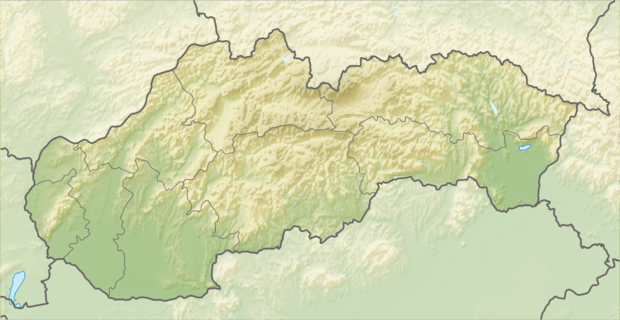Štvrtok na Ostrove
| Štvrtok na Ostrove Csütörtök | |
|---|---|
| village | |
 Location of the village | |
| Coordinates: 48°06′00″N 17°21′00″E / 48.10000°N 17.35000°ECoordinates: 48°06′00″N 17°21′00″E / 48.10000°N 17.35000°E | |
| Country |
|
| Region | Trnava |
| District | Dunajská Streda |
| First written mention | 1217 |
| Named for | Thursday |
| Government[1] | |
| • Mayor | Péter Őry (Party of the Hungarian Coalition) |
| Area | |
| • Total | 13.066 km2 (5.045 sq mi) |
| Elevation | 128 m (420 ft) |
| Population (2001)[2] | |
| • Total | 1,679 |
| • Estimate (2008) | 1,751 |
| • Density | 134/km2 (350/sq mi) |
| Ethnicity[2] | |
| • Hungarians | 82,85 % |
| • Slovakians | 12,33 % |
| Time zone | EET (UTC+1) |
| • Summer (DST) | EEST (UTC+2) |
| Postal Code | 930 40 |
| Area code(s) | +421 31 |
| Website |
www |
Štvrtok na Ostrove (Hungarian: Csütörtök or Csallóközcsütörtök, Hungarian pronunciation:[ˈtʃytørtøk]) is a village and municipality in the Dunajská Streda District in the Trnava Region of south-west Slovakia.
Geography
The village is in the Danubian Lowland and is in the western part of Žitný ostrov (Csallóköz). The municipality lies at an altitude of 128 metres and covers an area of 13.066 km².
History
In the 9th century, the territory of Štvrtok na Ostrove became part of the Kingdom of Hungary. The earliest extant document about the village dates back to 1217, in which it was referred to it by its Hungarian name as Villa Ceturthuc.
In the thirteenth century German settlers arrived in the village who named it Loipersdorfin. The village enjoyed Royal privilege to collect tolls and in the fifteenth century it gained the status of a town and had the right to hold markets and develop crafts and trades. Today Štvrtok na Ostrove is a basically agricultural village.
Until the end of World War I, it was part of Hungary and fell within the Somorja district of Pozsony County. After the Austro-Hungarian army disintegrated in November 1918, Czechoslovakian troops occupied the area. After the Treaty of Trianon of 1920, the village became officially part of Czechoslovakia. In November 1938, the First Vienna Award granted the area to Hungary and it was held by Hungary until 1945. After Soviet occupation in 1945, Czechoslovakian administration returned and the village became officially part of Czechoslovakia in 1947.
Demography
In 1910, the village had a population of 1228, mostly Hungarians.
At the 2001 Census the recorded population of the village was 1679 while an end-2008 estimate by the Statistical Office had the villages's population as 1751. As of 2001, 82,85 per cent of its population was Hungarian while 12,33 per cent was Slovakian.
As of 2001, 93,81% of the inhabitants professed Roman Catholicism.[2]
Landmarks
- The village is dominated by the late Romanesque church of St Jacob which is mentioned in documents from 1333. The church was altered over the years and the most extensive modifications took place following damage caused by an earthquake in 1590.
- The cultural monuments in the village include the Holy Trinity column, the St. Florian statue of 1893, several roadside crosses and monuments to the victims of the First and Second World Wars.
